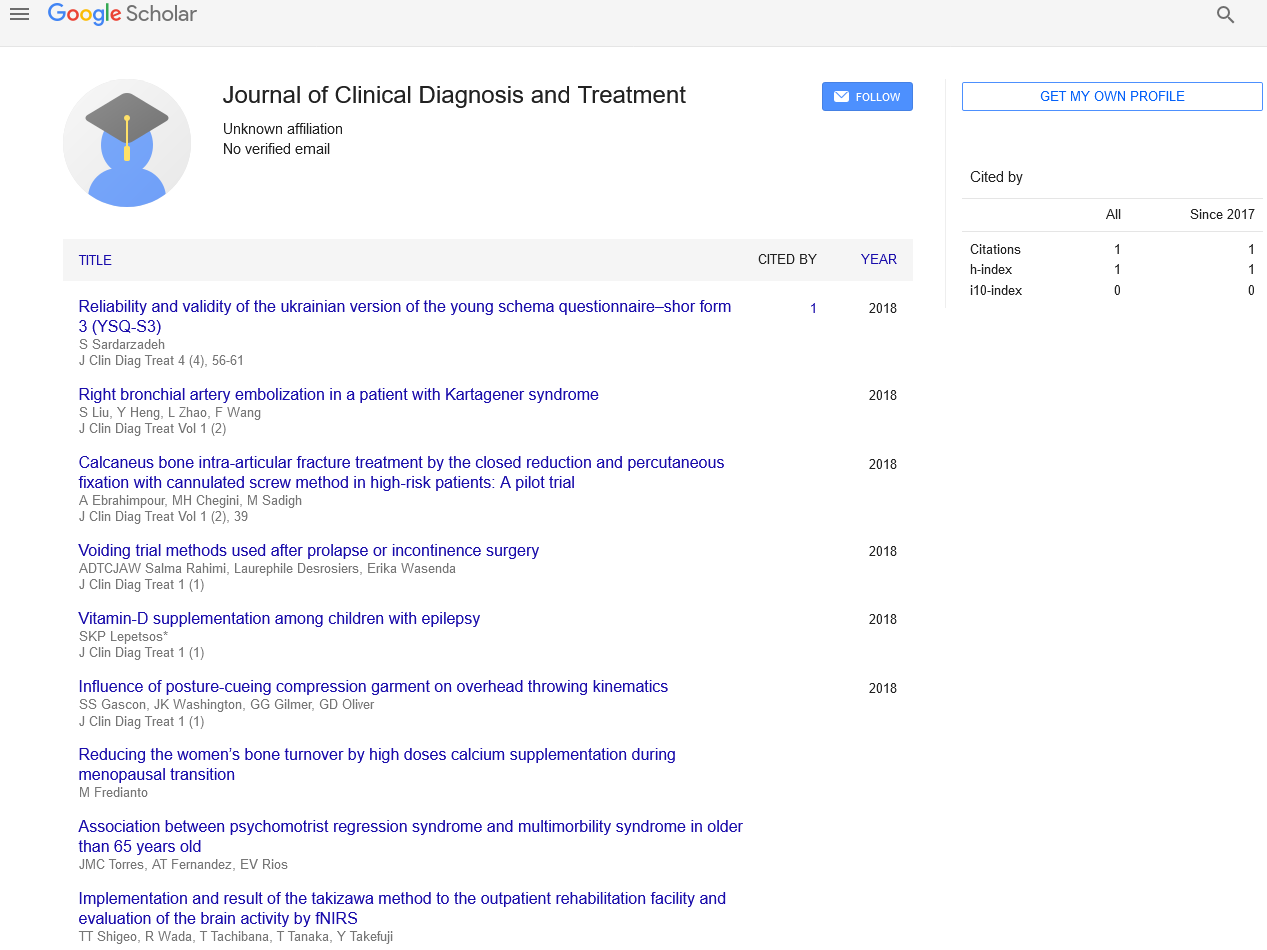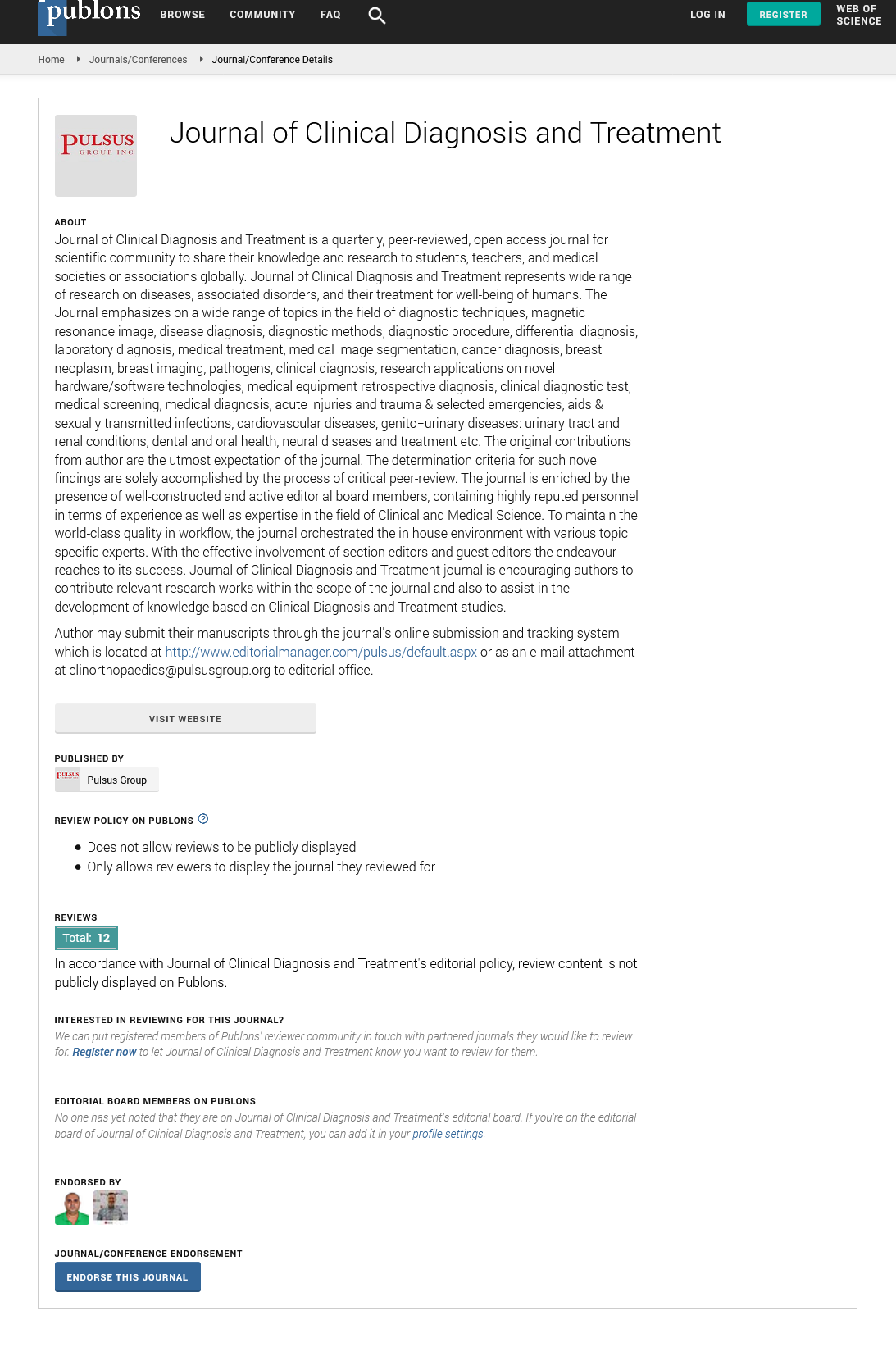A deadly viral infection that infects people, AIDS: HAART medication
Received: 05-May-2022, Manuscript No. PULJCDT-22-5310; Editor assigned: 07-May-2022, Pre QC No. PULJCDT-22-5310(PQ); Accepted Date: May 24, 2022; Reviewed: 16-May-2022 QC No. PULJCDT-22-5310(Q); Revised: 23-May-2022, Manuscript No. PULJCDT-22-5310(R); Published: 27-May-2022, DOI: 10.37532/puljcdt.22.4(3)
Citation: Editorial office, Journal Of Clinical Diagnosis and Treatment, UK
This open-access article is distributed under the terms of the Creative Commons Attribution Non-Commercial License (CC BY-NC) (http://creativecommons.org/licenses/by-nc/4.0/), which permits reuse, distribution and reproduction of the article, provided that the original work is properly cited and the reuse is restricted to noncommercial purposes. For commercial reuse, contact reprints@pulsus.com
Abstract
A fatal viral infection, AIDS (Acquired Immune Deficiency Syndrome), is brought on by HIV (Human Immune-Deficient Virus) infection. Nearly all AIDS patients pass away by the mid-1990s. AIDS used to be the number one killer in the US (1993). A Non-Nucleoside Reverse Transcriptase Inhibitor (NNRTI) or ritonavir pharmacologically enhanced Protease Inhibitor (PI/r) is added to the double nucleoside (NRTI) backbone of HAART. In comparison to 2NRTIs/NNRTI or 2NRTIs/PI/r combinations, triple NRTI combinations are less effective. First-line antiretroviral therapy is quickly shifting to more practical and safe regimens. There are currently three double NRTI co-formulations on the market, and medications including 3TC, FTC, and tenofovir have minimal rates of mitochondrial toxicity.Antiviral medication combinations and Highly Active Antiretroviral Therapy (HAART) have been developed after a decade of arduous research and development for practically all HIV infection therapies. 80%–90% of HIV/AIDS patients still respond to HAART for life-saving and lethal AIDS episode control thanks to the development of HAART. However, this particular HIV treatment is incurable. Patients with HIV/AIDS must regularly and maybe permanently take HAART drugs.
Keywords
HAART; HIV cure; Pharmacogenomics; drug delivery system
Introduction
Human Immunodeficiency Virus is referred to as HIV. AIDS is brought on by HIV. Your body's defense mechanism is called the immune system. While HIV targets and infects immune system cells that shield humans from pathogens and illnesses, the immune system can control numerous viruses. These cells are CD4 cells, a kind of white blood cell (which is a type of T cell). HIV often takes over CD4 cells and transforms them into factories that make millions of copies of the virus if no medicine is used to suppress it. The immune system is weakened as the virus weakens or kills CD4 cells as it multiplies. HIV causes AIDS in this manner.
A Sexually Transmitted Infection is HIV (STI). Additionally, it can be transferred through sharing needles, injecting illegal substances, and coming into touch with infected blood. Additionally, it can be passed from mother to kid while she is pregnant, giving birth, or nursing. Without treatment, it can take years for HIV to progressively impair your immune system to the point where you develop AIDS. The therapeutic responses of HIV/AIDS patients were extremely restricted before the development of highly active antiretroviral therapy (HAART), often known as cocktail therapy before the middle of the 1990s, all AIDS patients passed away within 2 years of the disease's onset as shown in Figure 1. When a patient contracts HIV, it appears to be a death sentence at the time.
Figure 1: Pathway of HIV causing death
The therapeutic responses of HIV/AIDS patients were extremely restricted before the development of highly active antiretroviral therapy (HAART), often known as cocktail therapy before the middle of the 1990s, all AIDS patients passed away within 2 years of the disease's onset. When a patient contracts HIV, it appears to be a death sentence at the time.
HAART invention
HAART, which was created around 20 years ago and combines the benefits of various antiviral chemicals, has significantly extended the survival of HIV/AIDS patients (by about 7 years to 10 years, or even longer), compared to the use of a single antiviral medicine. The standard of care for treating HIV infection and managing AIDS symptoms is now HAART [1, 2]
HAART toxicity
Antiretroviral treatment duration has increased, and this has resulted in the discovery of severe and delayed adverse medication reactions that are specific to drug classes [3]. The side effects of NRTIs that cause the most worry are pancreatitis, lactic acidosis, subcutaneous lipoatrophy, and peripheral neuropathy.
When should treatment proceed?
Whether treating HIV primary infection is necessary is still up for debate. Most medical professionals would treat severe, symptomatic primary infections, especially if there were neurologic signs or low CD4+ cell counts. It is unknown how long therapy should last. Patients with chronic HIV infection who exhibit modest HIV-related symptoms should receive treatment since there is a considerable possibility that their condition will progress quickly to become manifest. According to several researches, people with HIV and depressive disorders are more likely to have delays in receiving antiretroviral therapy and adhering to their prescription poorer than people with HIV alone [4]. However, it has been shown that receiving mental health care increases the likelihood that people with depression may obtain and use HAART [5, 6].
Despite having a better virological response than younger patients, people over 50 often exhibit a slower immunological response to HAART and more rapid clinical progression. Poorer CD4 cell response in patients starting HAART over 50 years old is likely influenced by low thymic production. Because elderly people are more likely to have comorbidities that call for specialized treatments that may interfere with antiretroviral therapies, managing HIV infection in these patients is particularly challenging.
Conclusion
The objective of this study is to determine over time, among a population of HIV-infected individuals receiving HAART, whether or not a diagnosis of a psychiatric condition is related to when HAART is stopped. In particular, we wanted to see if there were any variations in HAART discontinuation rates between people with depression, people with SMI, and people without any mental diseases. The risk of cardiovascular illnesses was dramatically enhanced by HAART treatment due to the much higher prevalence of hypercholesterolemia, elevated LDL-c, and hypertension.
REFERENCES
- Pomerantz RJ, Horn DL. Twenty years of therapy for HIV-1 infection. Nature medicine. 2003 Jul;9(7):867-73.
- Lu DY, Lu TR. High active antiretroviral therapy for HIV/AIDS, progresses and drawback. Adv. Pharmacoepidemiol. Drug Saf. 2012; 1(6):e115.
- Yeni PG, Hammer SM, Hirsch MS, et al. Treatment for adult HIV infection: 2004 recommendations of the International AIDS Society-USA Panel. Jama. 2004 Jul 14;292(2):251-65.
- Fairfield KM, Libman H, Davis RB, et al. Delays in protease inhibitor use in clinical practice. Journal of General Internal Medicine. 1999 Jul; 14(7):395-401.
- Himelhoch S, Moore RD, Treisman G, et al. Does the presence of a current psychiatric disorder in AIDS patients affect the initiation of antiretroviral treatment and duration of therapy?. JAIDS Journal of Acquired Immune Deficiency Syndromes. 2004 Dec 1;37(4):1457-63.
- Cook JA, Cohen MH, Burke J, et al. Effects of depressive symptoms and mental health quality of life on use of highly active antiretroviral therapy among HIV-seropositive women. JAIDS-HAGERSTOWN MD-. 2002 Aug 1;30(4):401-9..







